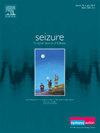莫扎特K.448对成年耐药局灶性癫痫患者发作间期癫痫样放电的急性影响:交叉随机对照试验。
IF 2.7
3区 医学
Q2 CLINICAL NEUROLOGY
引用次数: 0
摘要
研究背景本研究旨在有效评估莫扎特K.448对减少成年耐药局灶性癫痫(DRE)患者发作间期癫痫样放电(IED)的疗效:这是一项交叉 RCT 研究。方法:这是一项交叉 RCT 研究。按照癫痫病灶(即颞叶病灶和颞叶外病灶)进行1:1分层随机分组。干预措施包括两个研究臂,即 "莫扎特臂 "和 "对照臂"。研究时间为连续两晚,每晚包括基线期和干预期。研究结果为 IED 数量和显著减少 IED(即减少量≥ 25%)的患者比例。采用组内、受试者内和组间分析来检验听莫扎特乐曲时与基线或对照组相比 IED 数量的差异:26 名患者被随机分组,其中 13 人在莫扎特组,13 人在对照组。总体而言,听莫扎特乐曲时,26 名患者中有 16 人(61.54%)的 IED 显著减少,而继续睡眠(安静)时只有 7 人(26.92%)的 IED 显著减少。组间分析表明,在干预期间,即聆听莫扎特乐曲时,莫扎特治疗组的 IED 数量与保持沉默时的 IED 数量有显著差异,莫扎特治疗组的 IED 数量较低,为 39.5(IQR 89) vs 56.5(IQR 114);P = 0.007:我们的研究表明,莫扎特K.448对减少颞下颌角畸形成年患者的IED具有急性疗效。颞叶而非颞外叶癫痫患者对莫扎特乐曲的反应更好。莫扎特K.448在实际应用中是安全可行的。有必要对其长期效果进行进一步的 RCT 研究评估:泰国临床试验登记处,TCTR20231019005,2023年10月19日,"回顾性登记"。本文章由计算机程序翻译,如有差异,请以英文原文为准。
Acute effects of Mozart K.448 on interictal epileptiform discharges in adult patients with drug-resistant focal epilepsy: A crossover randomized controlled trial
Background
This study aimed to validly assess the efficacy of Mozart K.448 on reducing interictal epileptiform discharges (IEDs) in adult patients with drug-resistant focal epilepsy (DRE).
Methods
This is a crossover RCT study. Adults with DRE were included. Stratified 1:1 randomization by epileptic foci i.e., temporal versus extratemporal foci, was performed. Intervention consisted of two study arms i.e., “Mozart arm” and “Control arm”. Study period encompassed 2 consecutive nights, each night consisted of baseline and intervention period. Outcomes were IED number and proportion of patients with significant IED reduction i.e., reduction ≥ 25 %. Within-group, within-subject and between-group analyses were used to test differences of IED number when listened to the Mozart piece as compared with baseline or with Control.
Results
Twenty-six patients were randomized; 13 in Mozart and 13 in Control arm. Overall, 16 (61.54 %) out of 26 patients had significant IED reduction when listening to the Mozart piece, as compared with only 7 (26.92 %) when continuing sleep (silence). Between-group analysis showed that IED number during intervention period i.e., listening to the Mozart piece in Mozart arm and silence in Control arm was significantly different, with a lower number in Mozart arm, 39.5 (IQR 89) vs 56.5 (IQR 114); p = 0.007.
Conclusions
Our study demonstrates an acute effect of the Mozart K.448 on reducing IEDs in adult patients with DRE. Patients with temporal rather than extratemporal lobe epilepsy better responded to the Mozart piece. Mozart K.448 is safe and feasible in real practice. Further RCT study assessing its long-term effect is warranted.
Trial registration
Thai Clinical Trials Registry, TCTR20231019005, 19 October 2023, “retrospectively registered”
求助全文
通过发布文献求助,成功后即可免费获取论文全文。
去求助
来源期刊

Seizure-European Journal of Epilepsy
医学-临床神经学
CiteScore
5.60
自引率
6.70%
发文量
231
审稿时长
34 days
期刊介绍:
Seizure - European Journal of Epilepsy is an international journal owned by Epilepsy Action (the largest member led epilepsy organisation in the UK). It provides a forum for papers on all topics related to epilepsy and seizure disorders.
 求助内容:
求助内容: 应助结果提醒方式:
应助结果提醒方式:


